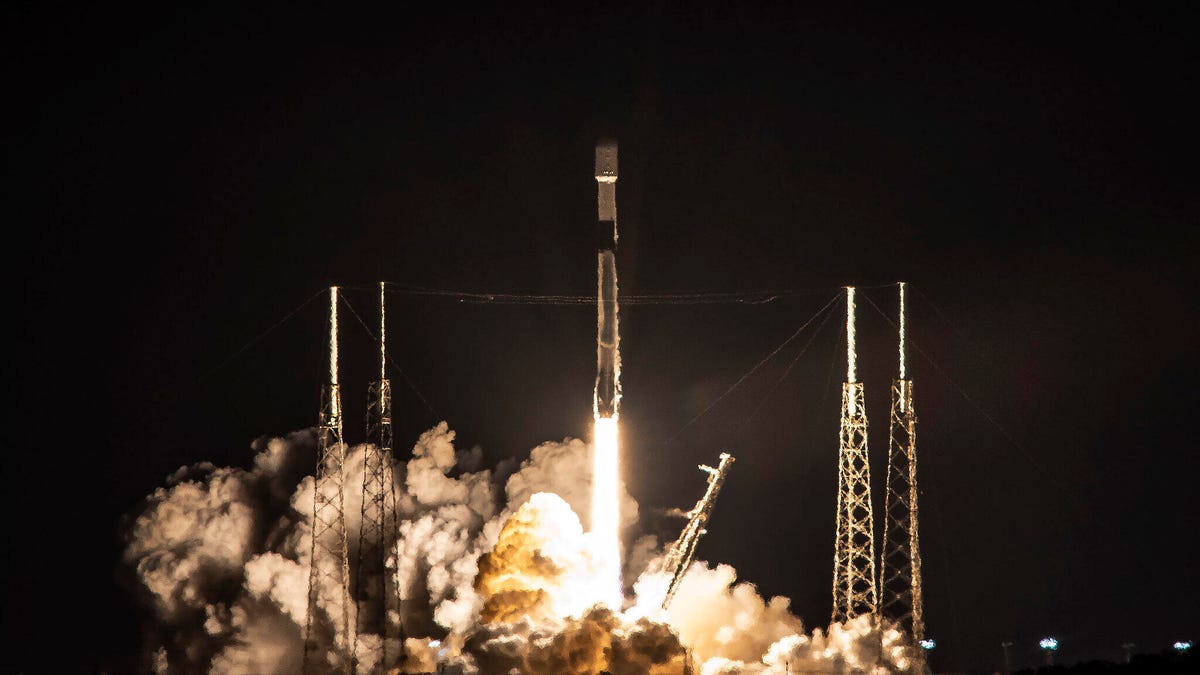How to watch SpaceX launch 2,000th Starlink satellite Tuesday
Not all of the broadband spacecraft are still up there, but more of the latest version fly from Florida on Tuesday.

A Falcon 9 rocket boosts a batch of Starlink satellites.
SpaceX is looking to set a strong pace for launches in 2022 as its third Falcon 9 mission of the month is scheduled to blast off from Cape Canaveral in Florida on Tuesday evening.
This will be the second Starlink mission of the year, with 49 of the company's low-Earth-orbit flying broadband routers ready to be deployed about 15 minutes after blast-off.
This mission will put the total number of Starlinks launched, including the earliest versions to make it to orbit, at over 2,000 for the first time, according to data kept by astronomer Jonathan McDowell.
However, a number of those satellites have been de-orbited or aren't currently active, as Elon Musk recently pointed out on Twitter.
1469 Starlink satellites active
— Elon Musk (@elonmusk) January 15, 2022
272 moving to operational orbits
Laser links activate soon
This latest batch of satellites includes laser links that will allow the Starlinks to communicate in orbit and reduce the need for numerous, costly ground stations.
The Falcon 9 booster that will do the lofting is making its 10th flight, having previously launched a GPS satellite, a Turkish communications satellite, a smallsat rideshare and six other Starlink missions.
The rocket will land on the droneship A Shortfall of Gravitas stationed in the Atlantic ocean less than 10 minutes after launch. The nose cone for this mission is also recycled from previous Starlink missions.
With more favorable weather conditions for liftoff and booster recovery, now targeting Tuesday, January 18 at 7:04 p.m. ET for Falcon 9’s launch of Starlink satellites → https://t.co/bJFjLCzWdK
— SpaceX (@SpaceX) January 17, 2022
Launch was initially set for Monday, but was pushed back for more favorable weather conditions the next day.
As usual, SpaceX will livestream the whole thing starting about 15 minutes before liftoff at 4:04 p.m. PT and you can watch via the feed below.

